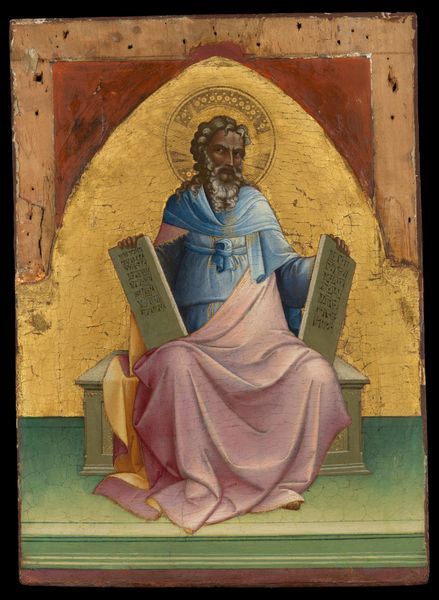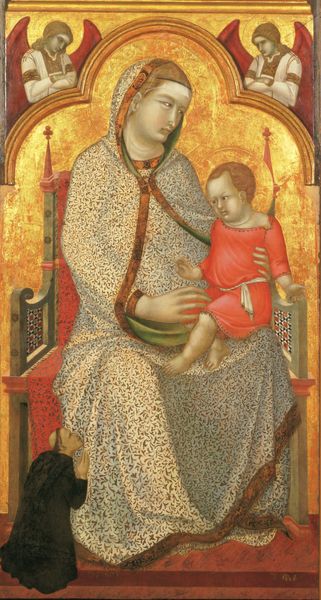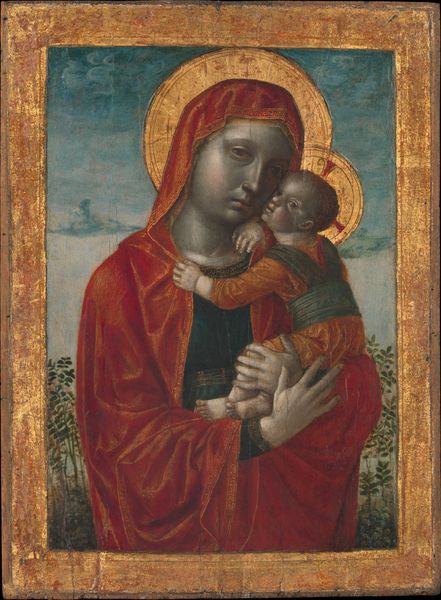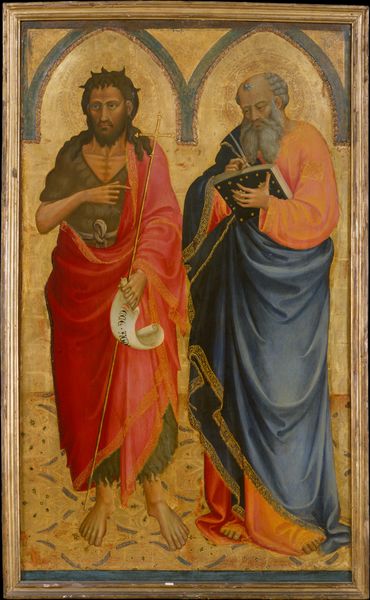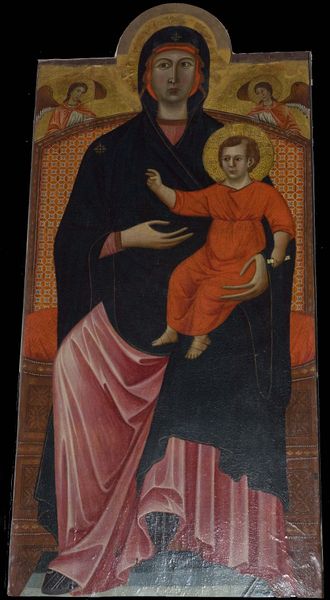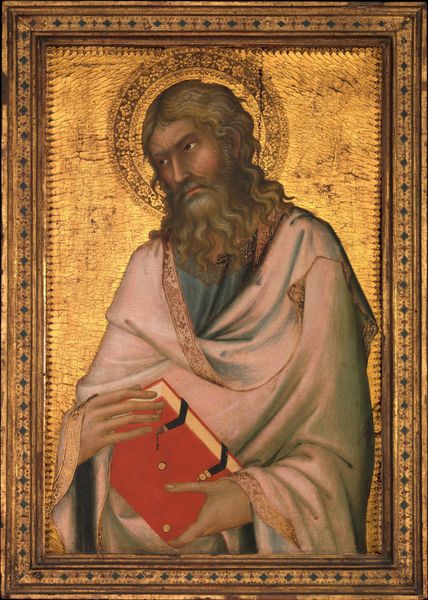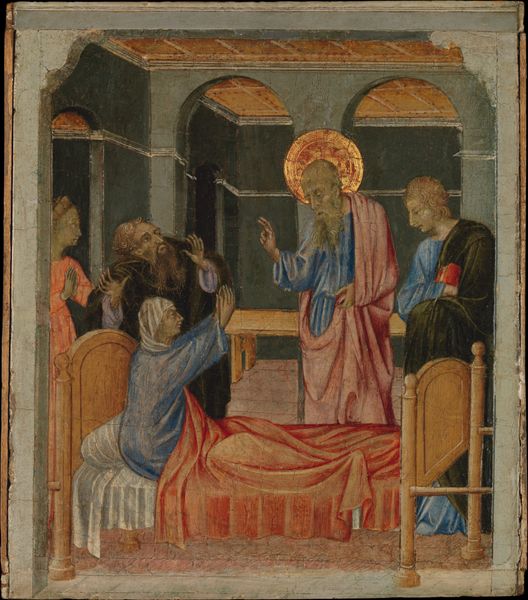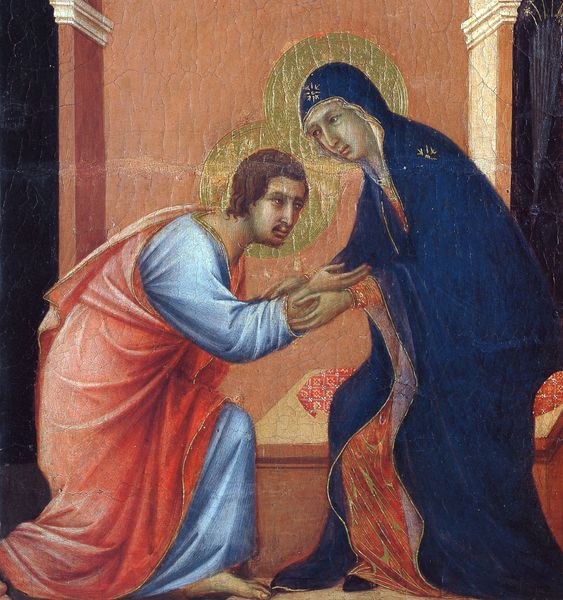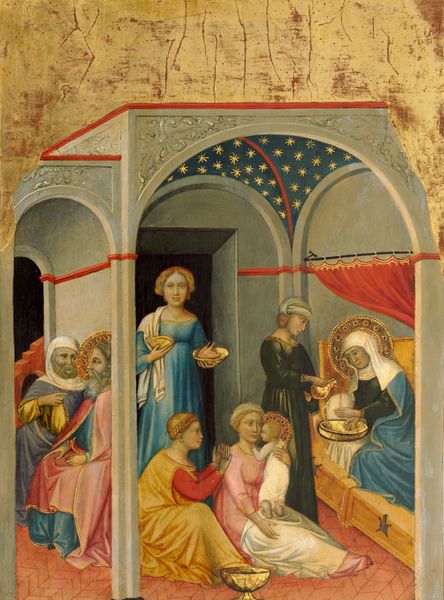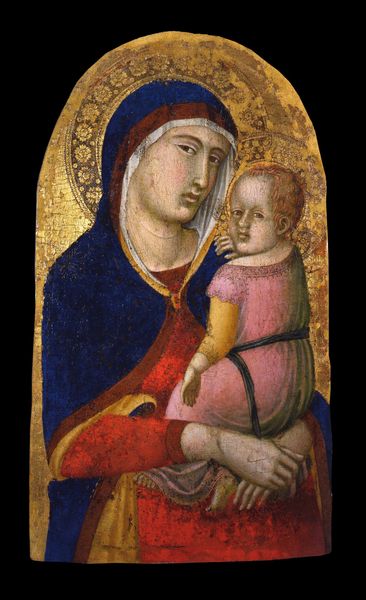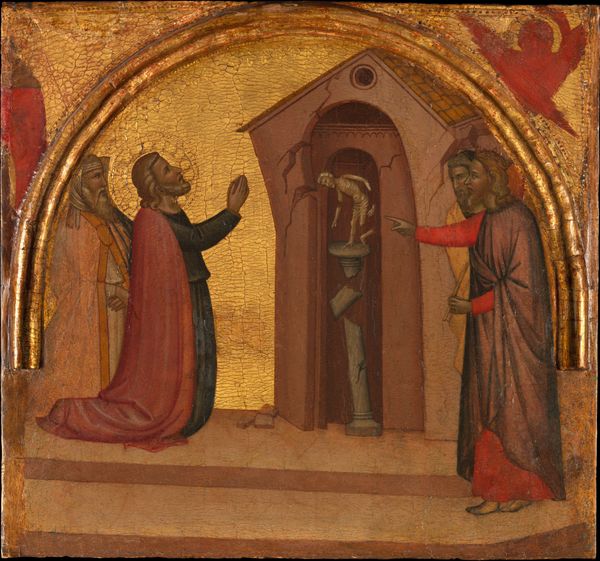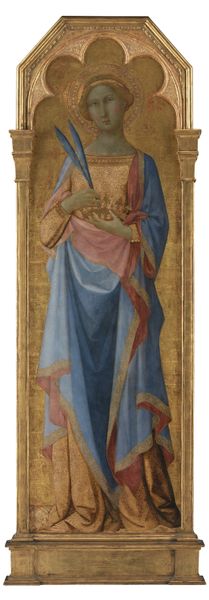
panel, tempera, painting
#
portrait
#
panel
#
tempera
#
painting
#
figuration
#
geometric
#
history-painting
#
academic-art
#
italian-renaissance
#
early-renaissance
#
portrait art
Dimensions: Overall 26 x 16 7/8 in. (66 x 42.9 cm); painted surface 22 7/8 x 16 5/8 in. (58.1 x 42.2 cm)
Copyright: Public Domain
Editor: So, this is Lorenzo Monaco's "Abraham," painted between 1408 and 1410. It’s a tempera on panel piece, and there's a clear hierarchy of figures through size and placement. The color feels vibrant but contained. What do you see in this piece beyond just the biblical narrative? Curator: I see a meditation on power and generational narratives. Abraham, in his dominant size and central position, embodies patriarchal authority. But what does it mean to portray this power at the historical moment of the early Renaissance? Consider how artists then were grappling with humanist ideals while still operating within rigid religious frameworks. Does Abraham's almost passive expression betray an inner conflict about this authority? Editor: That's fascinating. I hadn't considered that conflict. The positioning of the other figure kneeling before Abraham seemed purely reverential at first. Curator: And consider the symbol he holds – almost a fiery weapon or torch. Is it an emblem of divine authority, or perhaps a more troubling symbol of forced faith and patriarchal dominance? The Italian Renaissance wasn't just about artistic innovation, it was a period of renegotiating social and religious norms, so looking through a lens of feminist and postcolonial theory could invite critical conversations about the canonized figures and historical events represented here. What assumptions are being reinforced, and what counter-narratives might exist? Editor: I suppose I hadn't been examining my own positionality as a viewer within this history, reinforcing potentially oppressive legacies, or not even acknowledging that oppression at all. I appreciate you reframing it this way! Curator: And it's crucial to remember that even stylistic choices have weight. The use of tempera, the flat gold background, the careful geometric patterns, situates the image within a specific history of devotional art and underscores power dynamics in the painting, doesn't it? Editor: It does. I’m seeing it now as a visual record of a complex, contested history rather than just a simple illustration of a bible story. I am taking away the need to keep questioning the structures of power as represented by artistic portrayals of important historical moments. Thanks.
Comments
No comments
Be the first to comment and join the conversation on the ultimate creative platform.
